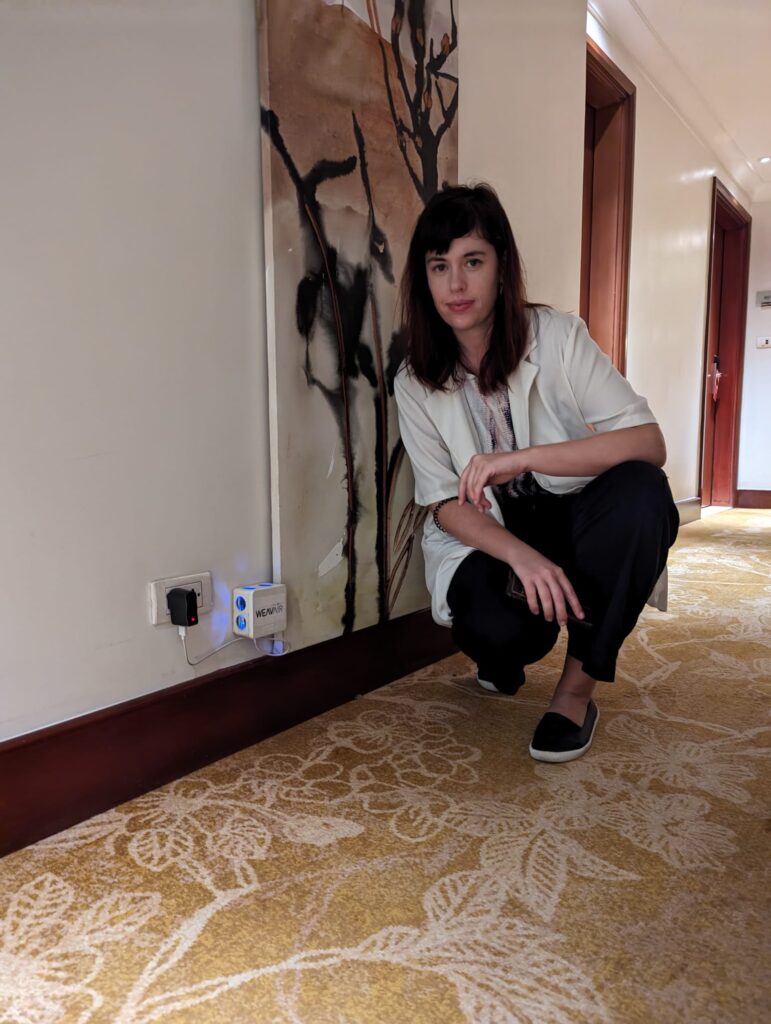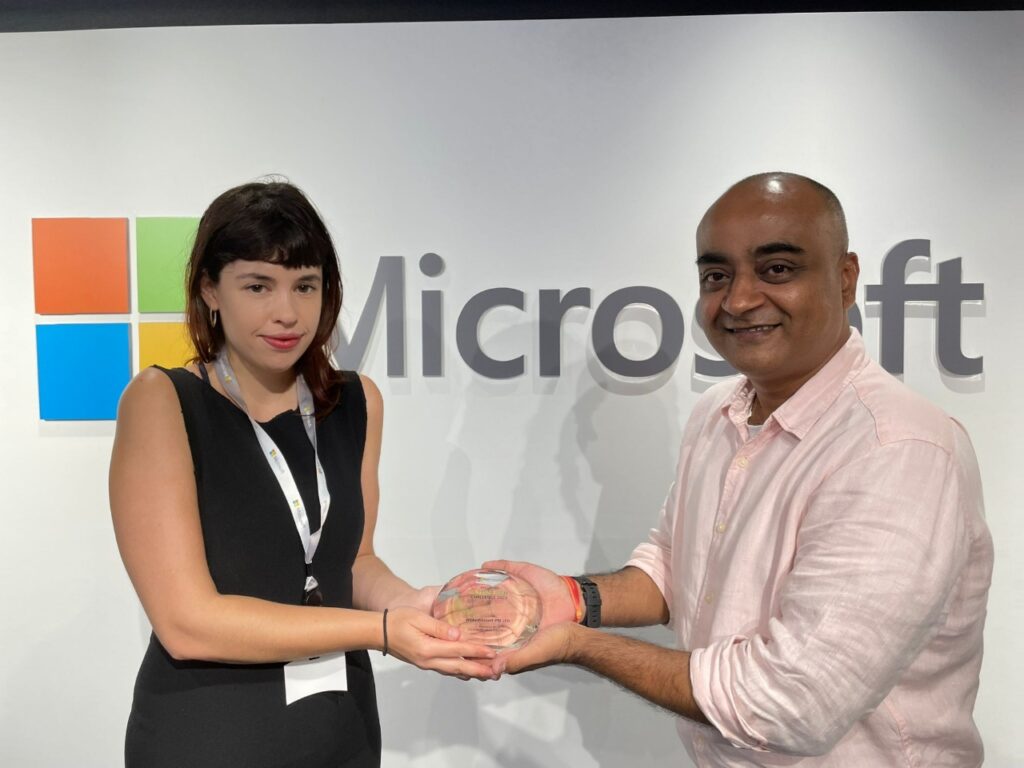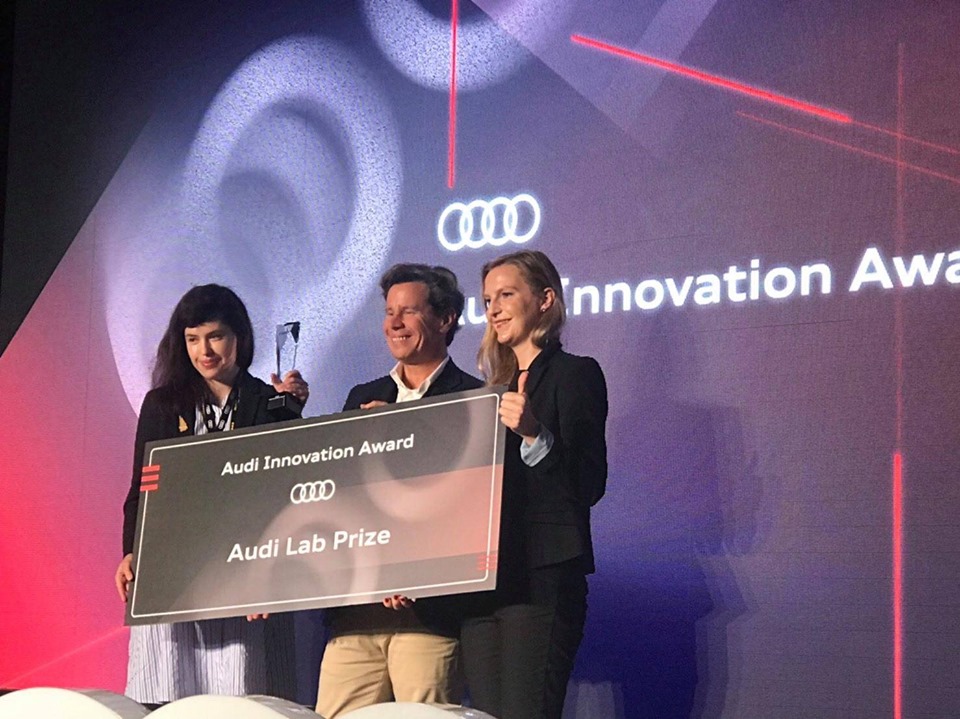Cities are on the frontlines of two pressing global challenges: climate change and rapid urbanization. Buildings and public transport alone account for over 60% of global carbon emissions, yet much of this infrastructure remains largely unmanaged in real time. Without accurate, timely data, decision-makers struggle to reduce emissions, access sustainable financing, and build resilient urban environments.
Thanks to the support of the EIT AI Founders Club, a high-impact initiative of the EIT AI Community supporting disruptive, early-stage European AI startups, WeavAir is closing this critical gap. By combining IoT sensors, artificial intelligence, and satellite data, this AI-powered startup transforms deep scientific research into a powerful climate intelligence platform. WeavAir empowers infrastructure owners to monitor emissions, optimize energy use, and qualify for green financing, providing a long-missing link between environmental science and finance in the climate tech landscape.
Bridging the Climate Data Gap
“I saw a deep disconnect between our technical ability to measure environmental risks and how that capability is actually applied,” says Natalia Mykhaylova, Founder and CEO of WeavAir.
“Decision-makers in infrastructure and finance don’t have the high-quality, real-time data they need to take effective climate action. That not only limits environmental outcomes but also blocks access to sustainable financing.”
“We cannot manage what we do not measure, and we cannot invest wisely without transparency,” Natalia adds. “Data is not just power, it’s our path to climate resilience.”

With a PhD in Chemical Engineering and over a decade of experience in climate systems, smart sensing, and data analytics, Natalia understood that the solution needed to go beyond software. It had to merge precision with scale, and scientific insight with financial impact. This vision became the foundation for WeavAir.
Breakthrough Results with a Global Footprint
“Our system acts like a brain for infrastructure,” Natalia explains. “It doesn’t just measure Environmental, Social, and Governance (ESG) metrics, it helps improve them. For example, we enable investors to validate the environmental integrity of green bonds, loans tied to environmentally friendly projects, and assess risks that assets might lose value due to climate changes, known as stranded asset risks, using real-time, location-specific data.”
And the results are impresive:
- A real estate investment group managing over €1 billion in assets once relied on occasional audits and outdated spreadsheets, offering only a partial view of their emissions. After implementing WeavAir’s real-time digital twin platform across their buildings, they achieved a 28% emissions reduction within 18 months. This transparency enabled them to secure a €25 million green bond to fund eco-friendly projects meeting the EU’s official sustainability standards, financing previously out of reach without reliable data.
- Partnering with a public transport authority overseeing 8,000+ vehicles, WeavAir replaced reactive maintenance with predictive analytics and emissions monitoring. This shift cut operational emissions by 30%, saved €4.2 million annually, and reduced maintenance-related service disruptions by over 40%. The authority also met new national emissions compliance standards more quickly and cost-effectively than anticipated.
- At a major international airport, WeavAir identified hidden energy inefficiencies linked to urban heat island effects. Using AI-enhanced forecasting and digital twin simulations, the airport revamped its cooling systems, slashing energy consumption by 35% and boosting emergency preparedness against extreme climate events.
“Every metric we help improve means cleaner air, smarter capital allocation, and a more resilient planet,” Natalia says.
These innovations have attracted international recognition. This year, WeavAir was selected by Airbus as one of the Top 3 global startups in the INNOspace Masters Challenge, thanks to their Earth-Space digital twin platform. The solution, which combines AI, IoT, and satellite data, was also showcased at the Paris Air Show, supported by the European Commission’s EUDIS programme. There, WeavAir connected with global partners to demonstrate how their technology is enabling the next generation of smart, secure, and sustainable infrastructure systems.



From Research to Real-World Impact
Natalia’s path as a founder is deeply rooted in science and driven by a clear mission. Before launching WeavAir, she gained broad experience across academia, government, and industry, understanding firsthand the regulatory, financial, and technological challenges to decarbonization.
“I believe climate solutions must be both ethical and profitable to scale,” she says.
Inspired by nature, WeavAir’s technology embraces modularity, adaptability, and efficiency. “Our multi-sensor arrays take cues from the energy-efficient olfactory systems of insects,” Natalia explains. These insects use highly sensitive antennae to detect environmental changes, vibration, temperature, gases, and pressure shifts.
At WeavAir, this biological principle is applied through multi-sensor IoT modules that collect detailed data on air quality, flow rate, gases, and vibration, all integrated with drone and satellite data. Combined with predictive AI software, the platform operates like a “nervous system” for infrastructure, spotting risks and optimization opportunities before they become problems.
A Community of Support Behind the Scenes
A key driver of WeavAir’s recent success has been its participation in the EIT AI Founders Club, part of the EIT AI Community. “The programme helped us refine our product and value proposition, but also opened doors we didn’t expect, like thought leadership opportunities and high-level mentorship,” explains Natalia. A pivotal connection during the programme helped WeavAir develop a data pipeline aligned with SFDR and CSRD standards, unlocking partnerships and new use cases in sustainable finance.
“Building deep tech solutions takes time, talent, and trust. The EIT Community gives founders like me a credible platform for co-development, regulatory alignment, and international visibility,” she adds.
Scaling a Global Vision
Looking ahead, WeavAir plans to expand its platform into new countries and sectors, including sustainable insurance and municipal infrastructure decarbonization. They are currently scaling in Germany, where verified ESG reporting and green finance demand is rising, in Spain, supporting climate-resilient infrastructure in tourism and transport, and Japan, addressing sustainability challenges in smart cities, logistics, and manufacturing.
To realize these ambitions, WeavAir seeks strategic partners in climate finance, certification bodies, and sovereign wealth funds, along with top talent in AI and sustainability.
“We’re especially eager to collaborate with impact investors, software engineers, and sustainability analysts who want to help scale solutions that truly move the needle on climate,” Natalia says.
WeavAir’s journey shows how innovative sensor technology, guided by Natalia’s core values of integrity, innovation, and impact, can drive real progress in building smart, sustainable, and resilient infrastructure. With strategic backing from the EIT Community, the company demonstrates what’s possible when visionary leadership is matched with the right ecosystem of support.


